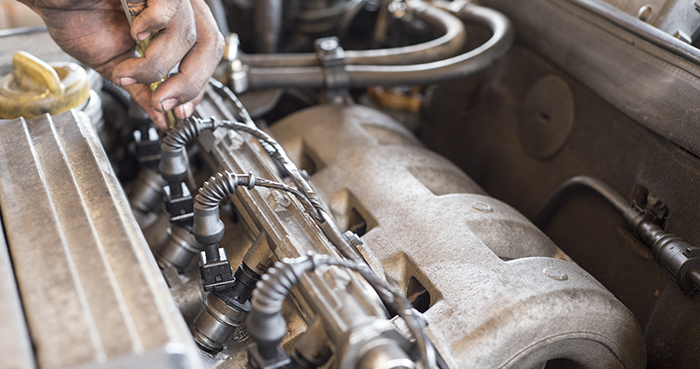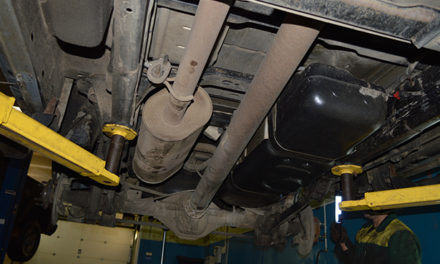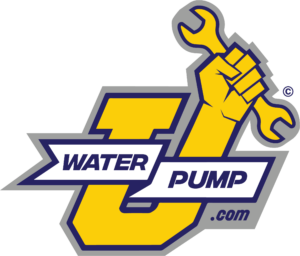The intake manifold has a port drilled in the intake runner very close to the intake valve. The injector nozzle is inserted into this port and is held in place by a common fuel rail. The fuel inlet side of the injector is plugged into the fuel rail and sealed with an O ring.
The fuel rail not only supplies the fuel to the injector but presses it into the intake manifold when secured with bolts. The rail is a round or oval-shaped metal tube. On return type fuel systems one end is the fuel inlet, and the opposite end has a fuel pressure regulator and return line.
The regulator is vacuum operated and maintains a constant fuel pressure across the injectors — 40 to 60 PSI, depending on the make and model. Excess volume returns to the fuel tank through the return hose connected to the regulator.
Replacement Procedure
All injector setups are a little different. The instructions below are just a general guideline. If you have any questions or if anything appears more difficult than described always refer to the service instructions.
Relieve the fuel pressure in the lines. It’s hazardous opening a pressurized fuel line. Open the fuse box on the driver’s side fender well. Remove either the fuel pump fuse or relay. The bottom of the fuse block lid indicates the location of the fuses and relays. If it is not there, consult the owner’s manual to determine the location.
Attempt to start the engine. It may or may not start, but if it does, allow it to run until it is out of fuel, and then turn off the key. After running the engine, the fuel pressure is relieved.
Remove the air cleaner and intake air hoses as necessary to gain access to the fuel rail. The fuel rail needs to be raised about two inches to remove the injectors. Inspect the surrounding area for anything that will interfere with raising the fuel rail and remove these items. Make a mental note of the location of any hoses or parts removed for ease of installation later.
Inspect the fuel inlet and return line for sufficient slack. Seldom do they need to be removed since they are normally flexible, but they may have a bracket securing them, or in some cases, they may be hard-lined. If they are a problem, disconnect them.
Clean all debris away from the injector nozzle where it enters the manifold. It is important to remove anything that could inadvertently fall into the intake manifold through the injector port.
Remove the electrical connector on each injector.
Use a socket to remove the bolts securing the rail to the manifold.
Pry the fuel rail up using a hammer’s handle or something similar. The fuel rail can be damaged with too much pressure, so use caution. Apply just enough upward pressure to pop the injectors out of the manifold.
When all injectors are free of the manifold, immediately inspect all the injector nozzles for their O ring seals. If one has come off, it may still be in the manifold. Extract the O ring before proceeding.
Remove the injectors by pulling them out of the fuel rail. Some injectors may have a retainer securing it to the rail. If a retainer is present, remove it first. It may be necessary to rock them slightly, but do not angle them more than a few degrees to prevent damaging the rail.
Installation
Inspect the new injectors and make sure they all have new O rings on the top and bottom. Lubricate the O rings with a very small amount of grease.
Push each injector into the fuel rail and make sure that the electrical connector is facing outwards.
Position the rail with injectors installed over the ports in the intake manifold. Be careful to line up each injector nozzle and slowly lower the rail until all injector nozzles are entering their ports properly.
Press the rail downward with the palm of your hand evenly and install the bolts in the fuel rail. Tighten the bolts evenly in an X pattern to seat the injectors.
Install the electrical connectors on the injectors and install the fuel pump fuse or relay. Turn the key on and check for leaks.
Reinstall the other parts removed to gain access to the fuel rail.


![[Vehicle Fitment-1]: Compatible with Ford Bronco 1990-1996 V8 5.0L, Bronco 1991-1996 V8 5.8L, Crown Victoria 1992-1997 V8 4.6L, E-150 2003-2004 V8 5.4L, E-150 Club Wagon 2003-2004 V8 5.4L, E-150 Econoline 1997-1998 V8 4.6L, E-150 Econoline 1990-1996 ...](https://m.media-amazon.com/images/I/51C9ppT0z0L._SL100_.jpg)







![[ FITMENT ] : This injector Replacement for Chevrolet Silverado 1500 HD/2500 HD/3500 ,SSR 5.3L 2003-2004,Tahoe 4.8L/5.3L 2001-2006,Trailblazer EXT 5.3L 2003-2004,Express 1500/2500/3500,For GMC Envoy XL 5.3L 2003-2004,Sierra 1500 4.8L/5.3L/6.0L,Savana...](https://m.media-amazon.com/images/I/51jfc8jScpL._SL100_.jpg)
![[Vehicle Fitment]: Compatible with Dodge Dakota 2004-2010, Compatible with Durango 2004-2009, Nitro 2007-2011, Ram 1500 2004-2010; Compatible with Jeep Commander 2006-2010, Grand Cherokee 2005-2010, Liberty 2004-2012; Compatible with Mitsubishi Raide...](https://m.media-amazon.com/images/I/41n6pS4S7WL._SL100_.jpg)


